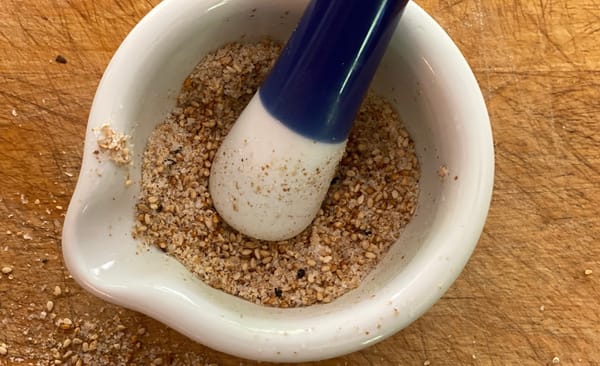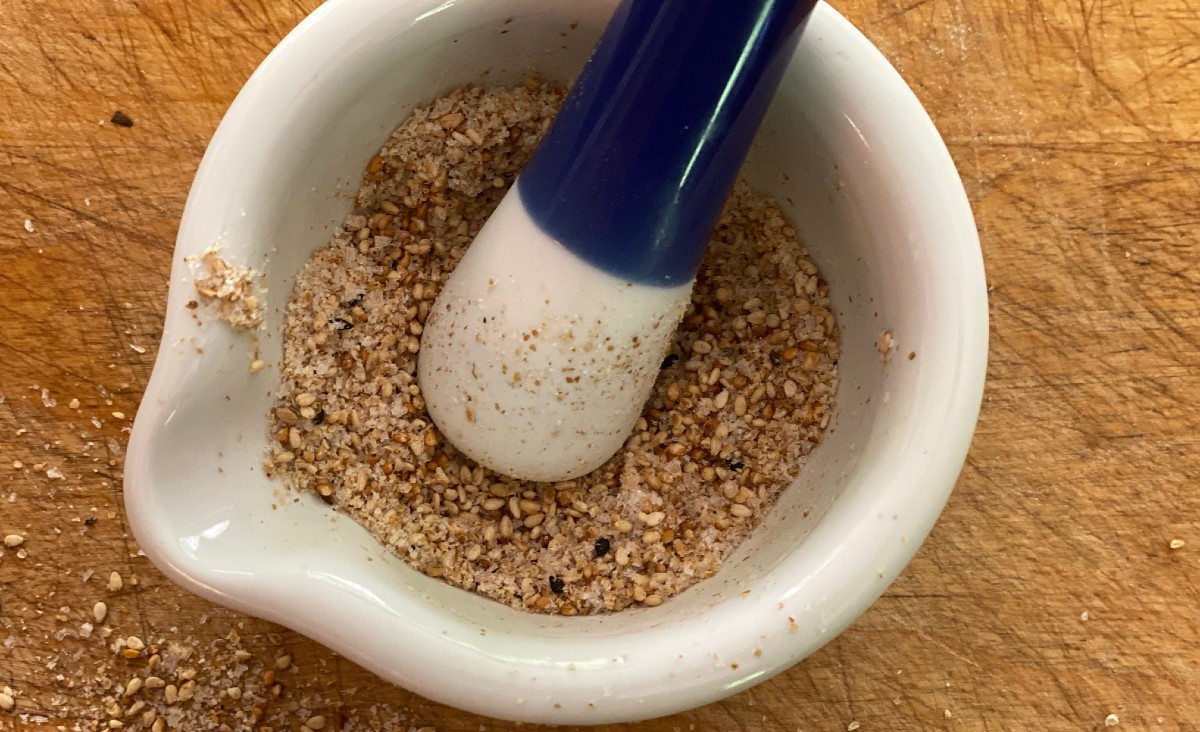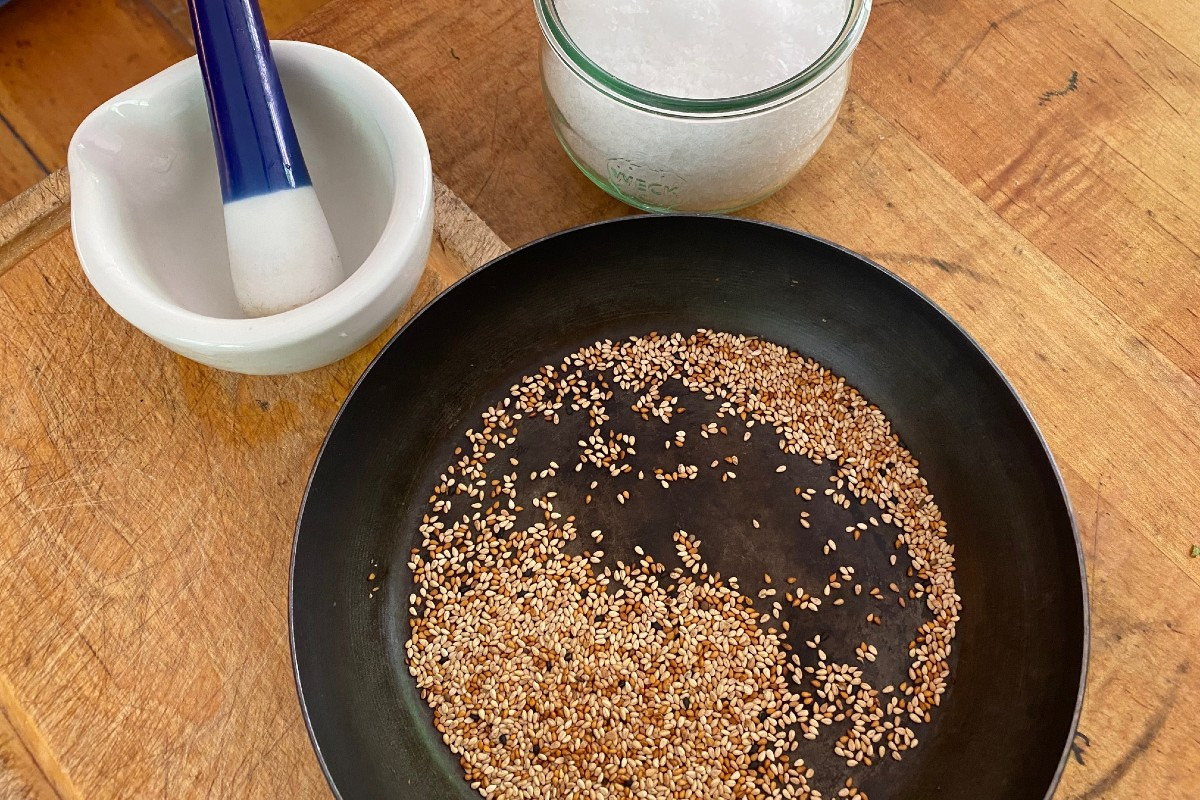Recipe: Homemade Gomasio with Locally Grown Sesame Seeds
You can now make this traditional Japanese condiment with sesame seeds grown right in our region.

You can now make this traditional Japanese condiment with sesame seeds grown right in our region.

I never thought I would be so lucky as to type these words together: locally grown sesame seeds. That’s because the bulk of this crop is grown so far from our region — in Southeast Asia for the most part. But thanks to the intrepid growers at MX Morningstar Farm in Hudson, I was able to pick up a jar of the wondrous little tan seeds at the Great Barrington farmers market and the first thing I did was to make my own homemade gomasio, which is a two-ingredient powerhouse of a condiment.
I was first exposed to it when I was a line cook at the fabled Quilted Giraffe in NYC in the 90s. What makes it so good is the process of lightly smoking/toasting the seeds in a dry skillet until they start to literally jump out of the pan and you can catch a whiff of the aroma from the next room. Then you let them cool a bit before adding to your mortar and grinding with a healthy pinch of flaky sea salt. I have yet to discover a summer recipe that a pinch of gomasio doesn’t make just a little better. But this morning I liberally seasoned scrambled pastured eggs and avocado with it and was rewarded by flavors that I thought about all day — in a good way!
Despite its deliciousness, don’t be tempted to make a big batch. Aim for enough for 3 to 4 days so the delightful aroma and inherent yummy oiliness of the sesame seeds is at full strength. And if you are trying to reduce salt in your diet, just tweak the ratio in favor of the sesame seeds. I like it best two parts toasted sesame seeds to one part Maldon Salt.

Gomasio
¼ cup sesame seeds — as fresh as you can find them
2 Tablespoons Maldon or other flaky sea salt
You will want to use a heavy bottomed skillet like black steel or cast iron for this. Simply add the sesame seeds to the skillet and heat over medium until the seeds begin to brown, emit a little wisp of smoke and start to pop out of the pan. Immediately transfer seeds to a plate so they can start to cool down. If you leave them in the pan, even off the heat, the residual heat may take them too far and they will get overbrowned and bitter tasting.
Once the seeds have cooled, transfer them to a mortar and add the salt. Grind as fine as you like with the pestle. Store the gomasio in an airtight container while it lasts.

